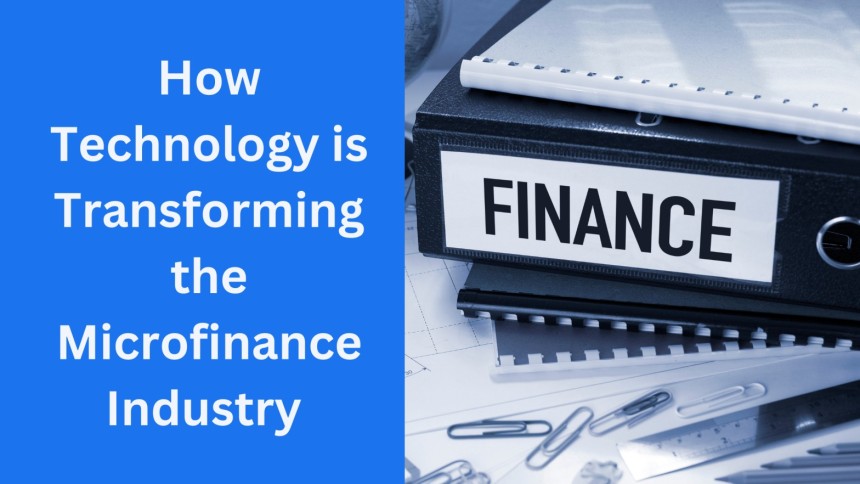How Technology is Transforming the Microfinance Industry
Microfinance plays a significant role in helping low-income individuals and small businesses access financial services.

Microfinance plays a significant role in helping low-income individuals and small businesses access financial services. It focuses on providing loans, savings, and insurance to those who may not qualify for traditional banking. Over the years, technology has become a game-changer in the microfinance industry, making financial services more accessible, efficient, and inclusive.
Whether it’s simplifying microfinance company registration, facilitating digital payment systems with an RBI PPI license, or enabling peer-to-peer lending with a P2P lending license, technology is reshaping the landscape of microfinance.
1. Improved Accessibility
a) Reaching Remote Areas
One of the biggest challenges for microfinance institutions (MFIs) has been reaching people in rural or remote areas. With the rise of mobile phones and internet connectivity, this issue is being addressed effectively. Mobile banking apps and SMS-based services allow people in remote locations to access financial services without traveling to physical branches.
b) Digital Payments via PPI
The RBI PPI license (Prepaid Payment Instruments) plays a critical role in improving financial accessibility. By allowing MFIs to offer digital wallets and prepaid cards, these licenses ensure that borrowers can easily deposit or withdraw funds. These digital payment systems have made transactions faster and safer, especially in regions with limited banking infrastructure.
2. Efficient Loan Disbursement and Repayment
a) Automated Loan Approval
Previously, loan approval processes were manual, time-consuming, and often involved a lot of paperwork. Now, with the help of artificial intelligence (AI) and data analytics, MFIs can quickly assess the creditworthiness of borrowers. Automated systems review financial histories and other factors to approve loans within minutes.
b) Flexible Repayment Solutions
Technology allows MFIs to offer borrowers flexible repayment options. For example, mobile apps can send automated reminders about due dates or allow borrowers to make partial payments based on their cash flow. Additionally, platforms operating under P2P lending licenses provide direct interaction between lenders and borrowers, enabling transparent and flexible loan terms.
3. Better Risk Management
a) Credit Scoring Models
Traditional credit scoring methods often exclude low-income individuals due to a lack of formal credit history. Technology enables alternative credit scoring models that use data such as mobile usage patterns, utility bill payments, and social media activity. This helps MFIs assess risk more accurately.
b) Fraud Detection
AI-powered tools can identify potential fraud by analyzing transaction patterns and flagging suspicious activities. This reduces the risk of fraud and ensures that financial resources reach genuine borrowers.
4. Cost Reduction
Technology significantly reduces operational costs for MFIs. For instance, mobile banking eliminates the need for setting up physical branches, which can be expensive to maintain. Digital documentation and cloud storage further reduce costs associated with paper records and manual processes. These savings allow MFIs to offer lower interest rates to borrowers, making loans more affordable.
5. Enhanced Customer Experience
a) User-Friendly Apps
Mobile apps designed for microfinance services are often simple and easy to use, even for those who are not tech-savvy. Many apps are available in local languages, making them accessible to a broader audience.
b) 24/7 Support
Chatbots and AI-driven customer support provide 24/7 assistance to borrowers, answering questions about loans, repayments, and other services. This builds trust and ensures a seamless customer experience.
6. Promoting Financial Literacy
Digital platforms are also being used to educate borrowers about financial management. Many MFIs offer mobile-based tutorials and videos that explain concepts like budgeting, saving, and managing debt. This not only empowers borrowers but also ensures they make informed financial decisions.
7. Collaboration with Fintech
a) Partnerships with Licensed Platforms
MFIs are increasingly collaborating with fintech companies to expand their reach and improve their offerings. Many fintech firms hold P2P lending licenses or RBI PPI licenses, enabling them to provide innovative financial solutions. Together, these partnerships allow for seamless integration of technology in microfinance services.
b) Blockchain Technology
Some MFIs are exploring blockchain technology to create transparent and secure systems for record-keeping and transactions. Blockchain ensures that data is tamper-proof, reducing errors and fraud.
8. Data-Driven Decision Making
Big data analytics enables MFIs to better understand their customers. By analyzing borrower behavior, spending patterns, and repayment histories, MFIs can design customized loan products and services. This data-driven approach ensures that the financial needs of borrowers are met effectively.
9. Impact During the COVID-19 Pandemic
The COVID-19 pandemic accelerated the adoption of technology in the microfinance sector. With lockdowns and social distancing norms, physical operations were disrupted. Technology stepped in as a lifeline, enabling MFIs to continue serving their customers through digital platforms. Mobile payments, virtual customer support, and online financial literacy programs became essential tools during this period.
10. Challenges in Adopting Technology
While technology offers numerous benefits, there are challenges too:
- Digital Divide: Not everyone has access to smartphones or the internet, especially in rural areas.
- Cybersecurity: Increased reliance on digital platforms makes MFIs vulnerable to cyberattacks.
- Training: Both staff and customers need to be trained to use digital tools effectively.
- Cost of Implementation: The initial investment in technology can be high, especially for small MFIs.
11. The Future of Technology in Microfinance
The integration of advanced technologies like AI, blockchain, and IoT (Internet of Things) is expected to drive the future of microfinance. For example:
- AI-driven chatbots will provide personalized financial advice.
- Blockchain will enhance transparency and trust in transactions.
- IoT devices may be used to track agricultural yields, enabling farmers to access loans based on real-time data.
Additionally, simplified processes for microfinance company registration and enhanced regulatory frameworks for RBI PPI licenses and P2P lending licenses will further streamline operations and promote growth in the sector.
Conclusion
Technology is transforming the microfinance industry, making it more efficient, accessible, and inclusive. By leveraging digital tools, MFIs are breaking down barriers and bringing financial services to underserved communities. Whether through simplified microfinance company registration, the innovative use of RBI PPI licenses, or the rise of P2P lending licenses, technology is enabling MFIs to adapt and thrive in a digital-first world.
The future of microfinance lies in embracing innovation while staying true to its mission of empowering low-income individuals and communities. With the right balance, technology can help the microfinance industry reach new heights and create a lasting positive impact on society.




How AI Note Taking Transforms Business Meetings
Discover how AI note-taking, powered by LOCKEDINAI, is revolutionizing business meetings w...
